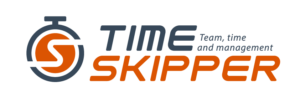5 reasons to set up an activity management tool in your points of sale

There’s no rest for distribution! During the health crisis, the sector’s transformation accelerated, and this phenomenon has continued in a context of strong economic and social tensions.
Today’s challenge is to maintain, if not increase, market share by offering customers the best possible experience combined with an attractive and, above all, competitive price. Inflation and competition make for an extremely difficult combination. There is also the question of how to control operating costs, which, like energy, raw materials and wages, are constantly rising in an unstable environment where recruitment and staff retention are under serious pressure. On top of all this, supply and delivery problems persist.
In these conditions, the impact on shops’ business is undeniable. Keeping it under control puts a huge strain on organisations, which have to demonstrate an unprecedented ability to adapt and respond operationally. They must also take care of employees’ well-being and keep an eye on service quality. Their margins and profitability depend on it!
The solution? Daily activity management. And to lead the mission to success and sustainability, an effective management tool that suits clients’ requirements and habits is essential.
Let’s look at five reasons why we strongly recommend implementing one.
A management tool to organise your shop’s activity
To improve a point of sale’s performance, you need to know where to focus your efforts, which means you need to know how your business is currently structured: what is actually being done, how much time is needed to complete each task, and what criteria influence the workload?
In a small-format outlet, for example, it is crucial to schedule tasks and have a clear view of which employees are available. This covers three scenarios:
- Can the calculated workload be done by those available?
- Can those available take care of an unexpected situation, such as a delay or unforeseen absence?
- Are enough people available for certain employees to be assigned other tasks, such as training or shop management?
Workload calculation is at the heart of activity management to be able to plan and size your teams, adjust hours to operational needs, and spread the work along teams and individuals.
For larger formats, in a context where resources are under pressure, it has become essential to identify employees in one sector who can be made available to teams in another on a day-to-day basis. This skill helps us to assess an organisation’s fluidity.
An activity management tool helps orchestrate your point of sale’s activity, modelling all shop formats and streamlining the organisation by taking into account staff profiles, their main tasks and priorities as well as operational needs. This sheds light on how resources are used during working hours, providing a basis for improvement.
 You want to know more about the TimeSkipper platform?
You want to know more about the TimeSkipper platform?
A management tool that identifies free time so you can take the right decisions
Speaking of improvement, did you know that 20 to 30% of time is used poorly in distribution? This happens when there is not enough work to do during working hours, tasks with no added value are carried out, or overtime is needed because some employees have excessive workloads when other people could be available to do the work. All this lost time can be recaptured with the help of an activity management tool.
Once we get a clear picture of who does what and how much time it takes, incorporating all this data and managing it automatically makes it easy to compare the workload with the hours worked.
This is how you can identify free time by individual, by team and by day. These available hours can be reallocated efficiently and intelligently to priorities and tasks that add value. The workload is smoothed out and distributed fairly and clearly: no more working too much or too little! Every working hour is made useful.
Recording daily activity in the tool provides reporting data that can be used for a detailed analysis, so you can take the right decisions for the long term.
What’s at stake? Improving the point of sale’s performance, of course!
An activity management tool to unite teams around new ways of working
The shakeup of the distribution sector requires employees to find new ways of working. They must be flexible, versatile, and capable of performing multiple tasks and working and acting in new ways. The goal is to do better by doing differently!
-
Management tools: supporting dynamic management
The manager is responsible for motivating and engaging their teams around a common objective: the shop’s performance.
Management tools offer several features to make your job easier:
- Workload calculations based on objective data from the field,
- An equal distribution of the workload within teams: spreading out the work and scheduling tasks for one or more categories of people,
- Assigning employees and teams to hours working outside their traditional roles as activity requires (backup at the tills, setting up shelves for one or more product families, sales advice or shop management), taking into account each worker’s background, skills, priorities and working hours,
- Workload schedule generation: the end document, produced after the automatic calculations and assignments, that the manager uses for their daily morning briefing.
Not only does the solution give the manager greater credibility, it also offers transparency and fairness, making it easier to engage teams.
-
A management tool for understanding your own contributions to the team’s objectives
Each employee knows what they and the others need to do to ensure that the shop runs smoothly: this clear picture of each person’s activity and role within the group fosters shared responsibility and motivates staff.
Employees are encouraged to help each other, take responsibility, work independently and learn new skills while enjoying suitable working hours. As a result, the teams’ workload during working hours is optimised, leading to a calmer working environment for everyone and a dynamic that is better adapted to the current context. Employees have a whole new range of options open to them, and the managers’ role is reinforced!
An activity management tool to optimise the customer experience
Clearly, in order to survive, we need to breathe new life into our points of sale to provide added value over and above the competition and win market share.
This involves improving stock-keeping and reception, organising events in the shop, giving the best sales advice, speeding up the checkout process, and developing ever faster and more sophisticated services, whether in terms of delivery, drive-through or click-and-collect. It may be a gargantuan challenge, but it is entirely achievable as long as the management tool has a role to play in the equation.
Management tools help you to organise your business, take account of the realities on the ground, manage new ways of working and regain hours that have been poorly used. They help you to allocate your time and staff resources to improving the customer experience: customers are better received and advised, the products they want are available on the shelves, the sales area is clean and well signposted, less time is spent waiting at the tills, and service-related tasks are better carried out.
The customer experience is more pleasant and frustration-free: baskets are fuller, turnover increases, and you can even think about saving your margins!
NEWSLETTER


